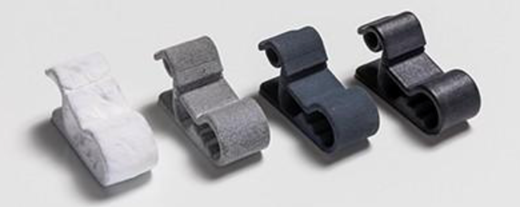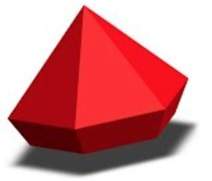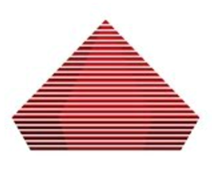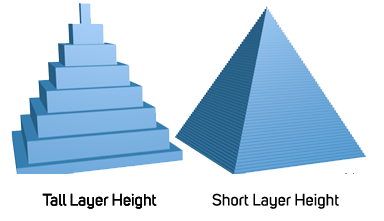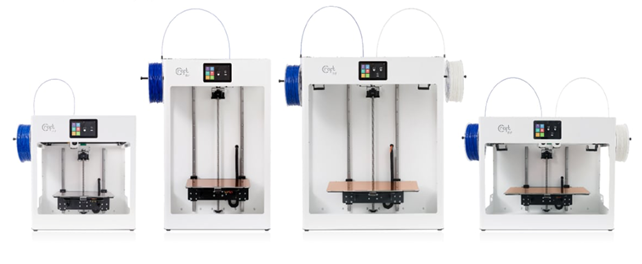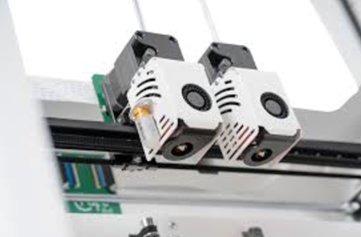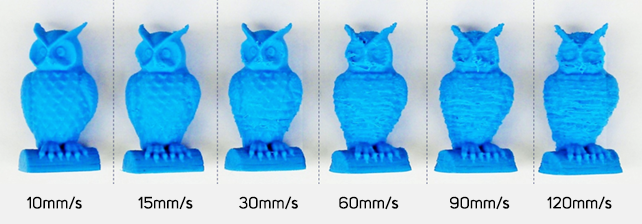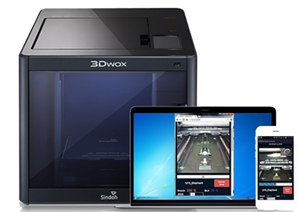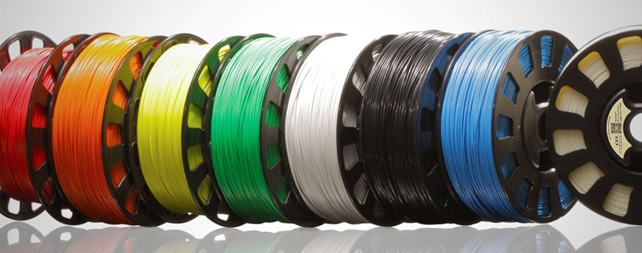How 3D Printers Work
So now we’re familiar with what it is and how it can be used, let’s look at how it works in detail. The process always begins with a digital 3D model - the blueprint of the physical object. This model can be created in a 3D design software package, of which there are many on the market. Typically the 3D digital model is then saved in either an STL or OBJ file format. Some models will also support GIF, JPG and PNG file formats too. The 3D printer then has software that slices the 3D file into thin, 2-dimensional layers and then turned into a set of instructions in machine language (called G-code) for the printer to execute.
From here, the way a 3D printer works varies by the process it uses to make the physical model. There are many types of 3D printing processes - resin stereolithography, sheet lamination, material jetting, vat polymerisation to name a few, however these tend to be more industrial means. The common desktop method is a material extrusion technique commonly called Fused Deposition Modelling (FDM) or Fused Filament Fabrication (FFF).
In FDM or FFF printing, a spool of filament is loaded into the printer and then fed to the extrusion head, which is equipped with a heated nozzle. Once the nozzle reaches the desired temperature, a motor drives the filament through it, melting it. The printer moves the extrusion head, laying down melted material at precise locations, where it cools and solidifies (like a very precise hot-glue gun). When a layer is finished, the build platform moves down and the process repeats until the part is complete.
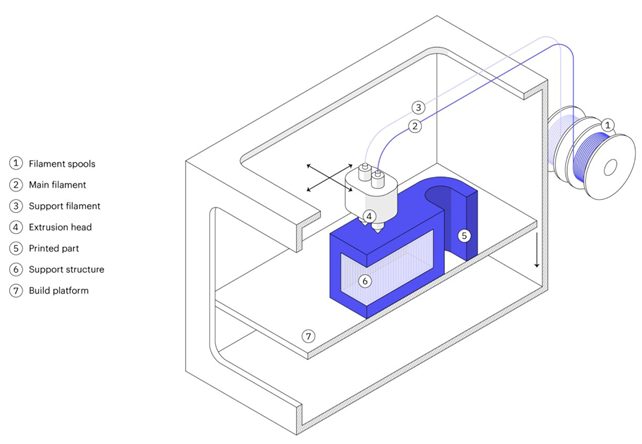
FDM or FFF printing is the most cost-effective way of producing custom thermoplastic parts and prototypes. It also has the shortest lead times due to the high availability of the technology. A wide range of thermoplastic materials is available for this technique, suitable for both prototyping and some functional applications. As for limitations, this technique has the lowest dimensional accuracy and resolution compared to the more industrial 3D printing technologies. Furthermore, as extruded parts are likely to have visible layer lines, post-processing is often required for a smooth surface finish.
Support removal is typically the first stage of post-processing for any 3D printing technologies that require a support to accurately produce parts. Support can generally be separated into two categories; standard and dissolvable. Standard support material can generally be removed from the print with little effort, and cleaning of support material in hard to reach places (like holes or hollows) can be achieved with dental picks and needle-nose pliers. Well placed support structures, and proper print orientation, can greatly reduce aesthetic impact of support material on the final print.

With a dissolvable support, the support materials will differ depending on the types of filament being used, but all are removed from a print by placing the print in a bath of solvent appropriate to the material until the support elements have dissolved. The part will then be finished using techniques such as sanding, polishing, priming and painting to achieve the finished article.
